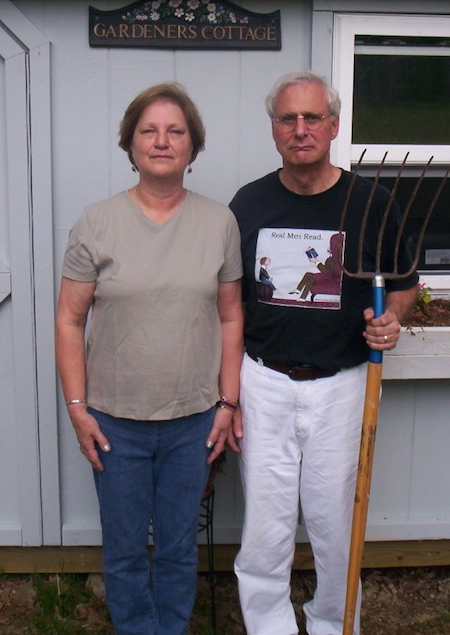 Dorothy and Julian Cannell. Photo credit: Trevor Cannell.
Dorothy and Julian Cannell. Photo credit: Trevor Cannell.
What is it like to be married to a writer? Late hours, messy offices, and unusual eating habits is the consensus, according to the spouses of award-winning mystery writers Margaret Maron, Dorothy Cannell, Harlan Coben, and Jan Burke.
What do writers eat? What do they wear? What do they like to do on their days off? Read on for the answers, presented in roundtable format, to these and other questions about life with TA (The Author). But first, an introduction to the spouses:
JOE MARON was a Navy officer and Margaret was a summer secretary when they met in the Pentagon. He later earned an MFA and taught studio art at the college level. He and Margaret now live in North Carolina on land that has been in her family for a hundred years. They have one son and two granddaughters.
JULIAN CANNELL is a retired small-town lawyer. He met Dorothy when they were next-door neighbors. They weren’t sure they liked each other until they discovered Anna Karenina was their mutual favorite book. They have been married for over 40 years.
ANNE ARMSTRONG-COBEN, MD, and Harlan have been together since 1982. They met at Amherst College where they both played basketball and were fraternity brothers (Amherst had coed fraternities). They married in 1988 and have four children—two girls and two boys, ages 11, 8, 6, and 4.
TIM BURKE is a musician and co-owner of a private tutoring company. He and Jan live in Southern California with their two dogs, Cappy and Britches.
What was your welcome-to-the-world-of-writing moment?
JOE: I stayed in the Navy for a second hitch after Margaret and I were married, wangling shore duty in Naples, Italy. We had an apartment with a broad terrace overlooking the bay where we used to sit and talk about our future. That’s where we decided we would do all we could to live our lives as creatively as our talents would allow. I suppose my welcome-to-her-world moment was that first sale—a short story to the Alfred Hitchcock magazine. That’s what validates you: somebody you don’t know gives you money for something you made up out of your head. That $65 triggered a lifelong celebration.
JULIAN: When Dorothy sold her first short story, two years before selling her book. Up to that point, I thought writing might be just another hobby, like her macramé (string took over our house) and defensive gardening (only the cacti survived).
ANNIE: There wasn’t really one. I’ve now been with Harlan for 23 years so it was a gradual welcome.
TIM: When Jan first began writing, we discussed whether she should use a pseudonym. I was concerned about protecting her privacy, but Jan decided to write under her real name. About two or three years after the first book came out, she received a fan letter from an inmate at Pelican Bay prison. Although the letter started out polite enough, by the third sentence he was asking for nude photos. We did some research, and found out that he was a serial rapist—who was out on parole! Fortunately (for us, at least) he beat up his roommate within three days of his release and was sent back inside.
What is peculiar or unusual about TA’s work space?
JOE: All Margaret’s books have been written in our house here in North Carolina, the first few on her portable typewriter from college days in a spare room about the size of a walk-in closet. She now has a very comfortable workspace with all the appropriate furnishings. But she’s still very hands-on, and will always try to make it herself instead of buying it new. She cobbled up one of those old teachers’ desks from a thrift store and reconfigured it to perfectly house her computer.
JULIAN: Dorothy’s first “office” was a corner of our cellar, next to the cats’ litter box. She had a $50 manual typewriter, a ream of paper, and a $2.95 lamp on a “desk” that was really a sheet of plywood balanced on two sawhorses. There were no windows. She had a real office for a while, but now she’s back in the cellar while her new office space is under construction. The space has windows, but she doesn’t like them. And she’s moved up from a typewriter to a word processor.
ANNIE: It’s an absolute mess most of the time. Towards the end of finishing a book Harlan refuses to clean it until he’s done and then there is a major, welcome cleanup.
TIM: Jan’s work area is always boiling with activity. It looks like a mad scientist’s lab, with at least five different research projects spread about. The OED is in a place of honor and gets heavy use. Nearby are five Thunderbird action figures (from the TV show), including the evil “Hood” whose eyes light up when he speaks. These were gifts from her niece. There are also several old clocks (she collects them). Oh yeah, and a wind-up “Nunzilla” that walks and breathes fire.
 Anne Armstrong-Coben and Harlan Coben
Anne Armstrong-Coben and Harlan Coben
Does TA have any rituals or superstitions that s/he follows when getting ready to write?
JOE: Margaret catches up on all her correspondence and cleans off all the surfaces in her office.
JULIAN: First Dorothy decides on the setting. She will think about it, talk about it with her friends, refine it. Once she has the characters in the setting in mind, she is ready to go. (She doesn’t need to know who the victim or the villain is when she starts. Her characters drive the story.) She also eavesdrops a lot in restaurants.
TIM: I can always tell when Jan is getting ready to write because she undertakes strange cleaning projects.
What things does TA do when writing s/he doesn’t do at other times?
JOE: Solitaire. Whenever Margaret gets stuck, she’ll lay out a hand of solitaire—and she keeps score. There’s a tiny tablet on her desk that has her cumulative score from several books back.
JULIAN: Chews pencils. Doesn’t call her friends. Dorothy is writing all the time—she can disappear into the cellar for six or eight weeks at a time.
TIM: Jan becomes a night owl, writing during the vampire hours. When I get up in the morning, she’s ready to go to bed. She usually picks a certain CD and listens to it exclusively while she’s working on a book. It can be a certain band, an opera, or a classical composer.
Are there any “rules of the house” when TA is in writing mode?
JOE: Not rules exactly, but Margaret does tend to go missing in action. Doesn’t care if there are formal meals, doesn’t want guests, doesn’t want to have to make any decisions of any kind. I’m at one end of a long house and she’s at the other. I probably annoy her periodically with inconsequential stuff but we’re pretty much in tune.
JULIAN: Dorothy must have absolute quiet. Although she generally does not want to be disturbed, occasionally she will appear, read a section, and ask if it’s good. The answer is always “yes.” Finished pages are saved on the table discarded pages are dropped onto the floor. The floor cannot be cleaned until the book is done, in case she decides to use something from a discarded page.
ANNIE: Harlan will lock himself away and the kids know not to bother him. Sometimes they take it to an extreme and will phone me at work with a simple question they could have asked him when he’s sitting right in the next room.
TIM: Don’t talk to the writer. Unfortunately, our dogs (especially Cappy) don’t understand this, so it becomes my job to give them more attention. And our social life (going out to dinner, seeing friends) is substantially cut back.
How does TA change when a deadline is approaching?
JOE: Margaret has always been a night person. In all our years together, I’d be surprised if she’s gotten up for a hundred sunrises. She does most of her writing late in the day and into the night. There have been plenty of all-nighters, so I guess she actually has seen a lot of sunrises, now that I think about it. She’s a crisis writer who hones in under deadline pressure—usually doesn’t miss them or, if so, not by much.
JULIAN: Sometimes Dorothy writes the last 100 pages in three or four days; stopping only for the occasional half-hour or hour nap, she goes around the clock, mainlining Red Bull. (She can go through 36 cans in a week.) She loses all track of time, and is simply writing like crazy to get it all down. She spends time polishing and revising at the beginning of a book, but the last 100 pages is always in finished form in her head.
ANNIE: Harlan tends to get much more focused and less able to write with the background noise of the family. He’s usually quite easygoing and not too serious but we get to see his serious side at that time.
TIM: Jan becomes an introverted hermit. During this period, if she is the driver and I am the passenger, I often find myself asking her, “Where are you going?” because she has just sailed past the turn we were supposed to make. She has been revising chapter eleventeen and has missed the turn.
 Jan and Tim Burke
Jan and Tim Burke
What’s TA’s favorite food when writing?
JOE: I’m convinced Margaret would live on sandwiches, nuts, and raw carrots if I didn’t cook occasionally.
JULIAN: Dorothy likes to nibble on raw pieces of spaghetti. It’s a substitute for her pencils.
ANNIE: Harlan used to call me an addict because of my love/need for coffee. He didn’t drink it until he became a writer. He now shares my addiction and does quite a bit of writing at the local coffee shop.
TIM: It used to be Dr. Pepper, then for a while red licorice and tropical-flavored Jelly Bellies. Now it’s pretty much cut-up fresh fruit.
Does TA have favorite “writing clothes”?
JOE: Slouchy sweatshirts and sneakers in the winter; T-shirts, shorts, and bare feet in the summer.
JULIAN: Dorothy’s favorite writing garment finally disintegrated in the wash. It was a long cotton flannel T-shirt with a teddy bear in the front. Now she wears long-sleeved pullovers. When she’s on deadline, I sometimes leave clothes and food at the top of the cellar stairs for her.
ANNIE: No, as long as they’re clean and comfortable. Oh, and Harlan prefers fitted boxers to briefs.
TIM: Clothing can be optional, especially when Jan gets up to write in the middle of the night.
What does TA do on breaks from writing? What is TA’s favorite off-day activity?
JOE: The usual: reading, promotional activities, lunching with friends, us just hanging out together. Margaret used to look for arrowheads when the fields were still being regularly plowed. Now she goes out with a hoe and chops sandspurs. Don’t ask.
JULIAN: Dorothy likes to walk in the woods near our house (she’s a power-walker), and to work out at the Y. She listens to Plácido Domingo and, of course, enjoys her grandchildren. She still gardens—it’s hard to kill mint.
ANNIE: After dismissing the game of golf for years, Harlan has now got the bug. This has been his most recent “break” from work. Harlan also has many other forced but welcome breaks throughout the day keeping up with our kids and their activities. He’s been enjoying watching our oldest playing basketball and lacrosse, and now our two boys have a passion for baseball. Harlan is a great waffle ball pitcher.
TIM: We have “reading parties,” where one of us reads a book to the other. On breaks, we will catch up with family, friends, and movies. Once we spent most of a weekend watching the first two seasons of The Sopranos back-to-back. We’ll also take the dogs to the beach or on long walks.
What does TA do when s/he has finished a book?
JOE: When Margaret’s done there’s the inevitable race to Kinko’s for, let’s see, about six copies: One for the agent, one for the editor, one for a local farmer’s wife (who reads for neighborhood/local color), and three for Wilmington. All the Deborah Knott books go straight to three district court judges down there who check for legal gaffes. Being neither a judge nor lawyer, Margaret has found the ideal solution. Once the manuscript is accepted by the editor she heads down to Wilmington for her “trial.” I usually go along and we take the judges to dinner. After a great meal, out come the manuscript. “I had something on page 24,” is usually the way it starts. Often enough something serious will be troublesome—like the time she wrote that “the statute of limitations ran on that a long time ago,” and was told that no, in North Carolina, there is no statute of limitations on any felony. She had built the whole back end of Home Fires on that premise and she started to panic. But out came the laptops as the judges searched the statutes for loopholes and damned if they didn’t find something called a “naked confession,” which saved the day.
JULIAN: Dorothy crashes and sleeps for a few days. One time I came down to the kitchen at 6:30 in the morning. She was sitting at the table in her nightgown with a snifter of brandy. When I asked her if it wasn’t a little early to start drinking, she told me it wasn’t morning for someone who started work at 9 p.m. and stopped at 4 a.m. She then announced that the latest book was done and asked me to send it off. When I asked her if she wanted to proofread it, she said she never wanted to see the thing again.
ANNIE: Harlan cleans his office.
TIM: Because Jan’s usually exhausted (and ready to dive into the next project), I think I do more celebrating than she does. Sometimes we’ll go out to a restaurant.
 Margaret and Joe Maron
Margaret and Joe Maron
What’s the worst thing about living with a writer that the public doesn’t know about?
JOE: Finding the best way to help without getting in the way. Margaret does not send her work around for peer review. I am her only sounding board, and she trusts me to tell her what I think. This caused a lot of battles in the past when she’d hand me a chapter to read—only to read—and I (in typical teacher fashion) would blue pencil the hell out of it. Big mistake. We blessedly gave up on that long ago. She now reads each chapter to me as she finishes it and I’m much less likely to jump in. She’s a good reader of her own work. Then we discuss. I must confess that I don’t read much fiction and I’m not especially interested in whodunit. What does interest me is pacing, tone, contrast, flow, that kind of thing. I think of her work as a piece of music.
JULIAN: You have to be prepared to spend time alone. It’s not a problem for me, because I love to read, but it could be frustrating for others.
ANNIE: They’re really working all the time. With Harlan his head is always churning and he’s always got a pen and pad at his side—even in the middle of the night he’ll awaken to write down his most recent “brilliant” thought.
TIM: When the copyedited manuscript comes back, I try to be out of town for at least 24 hours. Jan is either infuriated at the red-lining or feels dumb at missing things. And even though Jan loves it, I don’t like the traveling. I’m not a chatty person when it comes to the phone. I prefer that we talk face to face, rather than by phone—tough to do when she’s on the road!
What’s the best thing?
JOE: Living with a writer is never dull. They really do look at things differently. And mystery writers are always willing to speculate on alternative realities. And all that business about “living on our wits” that we laid out back in Naples? That’s come largely if not spectacularly true. The dog flies are pretty bad in the summer here and it does stay hot an awful long time, but eighteen acres of swaying pines, gardenias, tomatoes, lettuce all winter…. For a kid from Brooklyn, it’s like having your own country.
JULIAN: Writers are marvelous conversationalists and entertainers.
ANNIE: For us, it’s been his availability to the family. Except when on book tour, Harlan is ever present. He’s there to drive the kids to school and activities or just pick them up for a midday lunch. The problem is that when he’s gone, they all decompensate because they miss him so much. I am a pediatrician and am not sure I’d be able to work part-time as I do if his schedule weren’t so flexible.
TIM: It’s a thrill to be involved in the process early on. I get to see the gems that don’t make the cut, and to be a listener when she needs to bounce ideas off someone.
Anything you’d like to say to TA’s fans/readers?
JOE: I think readers might be surprised how much Margaret values them and how much she appreciates the letters and positive comments. It can be a solitary occupation and she likes hearing that someone out there gets it—gets the literary allusions, the sly offhand remarks, the ironies.
JULIAN: In every book, there is a piece of the writer. If you read several books by the same author and/or spend time with her, you will see it. Part of the writer is in her protagonist, part of the personality of the creator is in the character she has created.
ANNIE: Just that he really and truly appreciates them. He never takes that fan base for granted.
TIM: Thank you for your support! But if you mean advice, well …
If you find a small typo or what you think is a mistake in a book, let it go. You’d be amazed at how many lunatics crawl out of their caves because they feel compelled to send Jan a three-page missive to the effect that “you said the sun rose at 5:46, but it never rises any earlier than 5:47 every other leap year in April.”...
Jan loves to hear from readers on how a book meant something to them. She also enjoys the relationships she has developed over the years with fans and booksellers.
If you could change one thing about the publishing world, you would …
JOE: Put all Margaret’s Sigrid Harald books back into print and encourage her to write new ones. I would also, of course, divert the company’s whole publicity budget to her!
If TA weren’t a writer, s/he would be a great …
JOE: Judge—what else?
JULIAN: Comedian, actor (I’m always telling her she should read her own books for audio ), interior designer, craftsperson.
ANNIE: Stand-up comic. I think I fell in love with Harlan for his sense of humor.
TIM: Filmmaker, dog trainer, therapist, song writer.
If there is an Edgar in your house, where does it live? Does TA ever talk to it?
JOE: It lives on a shelf in her office and Margaret doesn’t talk to it, but she does smile at it occasionally.
ANNIE: In a wooden display box with a glass front in our living room. I actually broke the first one cleaning one day. That led to the new protective home. I don’t think Harlan ever talks to it but I’m not sure.
TIM: It lives in Jan’s office on a bookshelf. She never talks to it. However, I have noticed it always has something snide to say to me whenever I pass by. It’s starting to make me paranoid, but I bet many of you already accuse me behind my back of paranoia.
Any words of advice for other writer’s spouses?
JOE: Enjoy the ride and don’t take it too seriously.
JULIAN: Be prepared to spend time alone. Also be prepared to encounter two types of people—those who will be in awe of your spouse, and will invite her to cocktail parties so they can pass her around with the cashews, and those who will like her for who she is, and never talk about her craft.
ANNIE: Just to be supportive and believe in them. When asked to read drafts, give honest feedback but try to always be positive. Harlan’s the first to admit, writers tend to be insecure about their writing and the spouse’s job is to tell them they’re great!
TIM: Never admit you think the copy editor has a point unless you have previously checked out all possible points of egress from the building. Don’t take it personally when a writer asks to be left alone to work; even though it looks as though she is at home, she’s really at the office. You owe it to the writer to be honest—if you think something is bad, you have to say so. You may want to put on hockey gear before you do this.
Twist Phelan is the author of the Pinnacle Peak series, legal-themed mysteries set in Arizona featuring different sports, published by Poisoned Pen Press.
This article first appeared in Mystery Scene Fall Issue #91.


 Photo: Barry Zeman
Photo: Barry Zeman Though that beginning remained virtually unchanged, Winspear didn’t get around to finishing the book until more than a year later, when she had come to another standstill—literally. An avid horsewoman, Winspear suffered a horrible riding accident that crushed her right shoulder and landed her in orthopedic “scaffolding” for a month. “My writing buddy said, ‘Well, now you can finish the book.’ I protested, ‘I can’t use my right hand!’ And she said, ‘You still have the left.’” Winspear laughs. She now credits the frustration of one-handed typing with improving her mobility. “I did my physical-therapy exercises religiously! My doctor predicted I might have 75 percent recovery, but I had 85 percent within a year.” It only took two of those 12 months, however, to complete Maisie Dobbs (Soho Press, 2003), which went on to win the Macavity Award, the Edgar Award for Best Novel, and the Agatha Award for First Novel that year.
Though that beginning remained virtually unchanged, Winspear didn’t get around to finishing the book until more than a year later, when she had come to another standstill—literally. An avid horsewoman, Winspear suffered a horrible riding accident that crushed her right shoulder and landed her in orthopedic “scaffolding” for a month. “My writing buddy said, ‘Well, now you can finish the book.’ I protested, ‘I can’t use my right hand!’ And she said, ‘You still have the left.’” Winspear laughs. She now credits the frustration of one-handed typing with improving her mobility. “I did my physical-therapy exercises religiously! My doctor predicted I might have 75 percent recovery, but I had 85 percent within a year.” It only took two of those 12 months, however, to complete Maisie Dobbs (Soho Press, 2003), which went on to win the Macavity Award, the Edgar Award for Best Novel, and the Agatha Award for First Novel that year.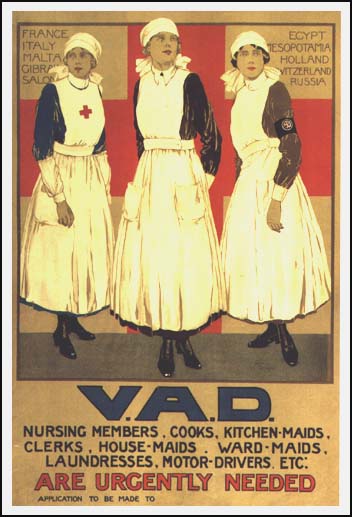 Growing up, Winspear read WWI poets such as Wilfred Owen and in the country towns saw the markers listing the war dead, with long groups of names often from the same family. In some cases, all of the men from one place had been killed. Winspear found out that this was the result of a government recruitment scheme as the war raged on. “”It was great marketing,” she notes ruefully. “They realized no one would give their life for their country, but they would for their friends and family. They encouraged men to join as a village, as fellow factory workers or bootmakers. Five members of a family would often die on the same day. It was a shock to the community.” Winspear later made this theme the backbone of her second Maisie Dobbs novel, Birds of a Feather (Soho Press, 2004), another Agatha Award winner.
Growing up, Winspear read WWI poets such as Wilfred Owen and in the country towns saw the markers listing the war dead, with long groups of names often from the same family. In some cases, all of the men from one place had been killed. Winspear found out that this was the result of a government recruitment scheme as the war raged on. “”It was great marketing,” she notes ruefully. “They realized no one would give their life for their country, but they would for their friends and family. They encouraged men to join as a village, as fellow factory workers or bootmakers. Five members of a family would often die on the same day. It was a shock to the community.” Winspear later made this theme the backbone of her second Maisie Dobbs novel, Birds of a Feather (Soho Press, 2004), another Agatha Award winner.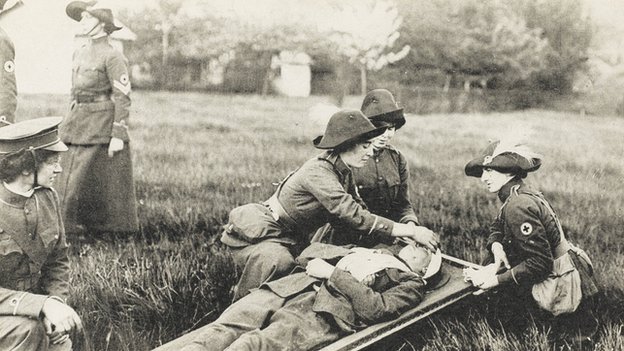 Maisie’s use of psychology, yoga and mind-body techniques may seem ahead of her time, but Winspear points out that Freud and Jung had already published and “The British had a great deal of interest and fascination with India and the Raj.” Readers may even recognize mention of a fitness regimen that’s hot in health clubs today. “Los Angeles thinks it discovered Pilates,” laughs Winspear, “but [the German-born] Joseph Pilates taught these exercises while held at an internment camp in England during the war.” Pilates later became a nurse and developed apparatus and routines used to help rehabilitate veterans.
Maisie’s use of psychology, yoga and mind-body techniques may seem ahead of her time, but Winspear points out that Freud and Jung had already published and “The British had a great deal of interest and fascination with India and the Raj.” Readers may even recognize mention of a fitness regimen that’s hot in health clubs today. “Los Angeles thinks it discovered Pilates,” laughs Winspear, “but [the German-born] Joseph Pilates taught these exercises while held at an internment camp in England during the war.” Pilates later became a nurse and developed apparatus and routines used to help rehabilitate veterans. Though Winspear often returns to the UK for research and family visits, she has lived and worked in California since 1990, and feels that is an advantage. “I’m not distracted by England in the present and can detach, like an astronaut looking back at Earth. I can more readily immerse in that earlier time.”
Though Winspear often returns to the UK for research and family visits, she has lived and worked in California since 1990, and feels that is an advantage. “I’m not distracted by England in the present and can detach, like an astronaut looking back at Earth. I can more readily immerse in that earlier time.”






 "It’s never chocolate or vanilla for me. More like a 'swirl.'"
"It’s never chocolate or vanilla for me. More like a 'swirl.'"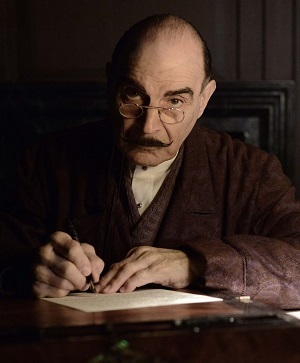
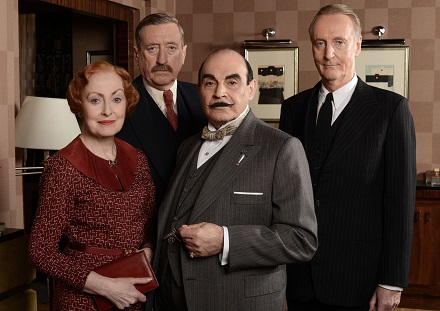



 MINNESOTA PEACH COBBLER
MINNESOTA PEACH COBBLER JOANNE FLUKE
JOANNE FLUKE


 PHYLLIS' SPICY PEACH COBBLER
PHYLLIS' SPICY PEACH COBBLER
 Honey Cinnamon Peach Sopapillas
Honey Cinnamon Peach Sopapillas

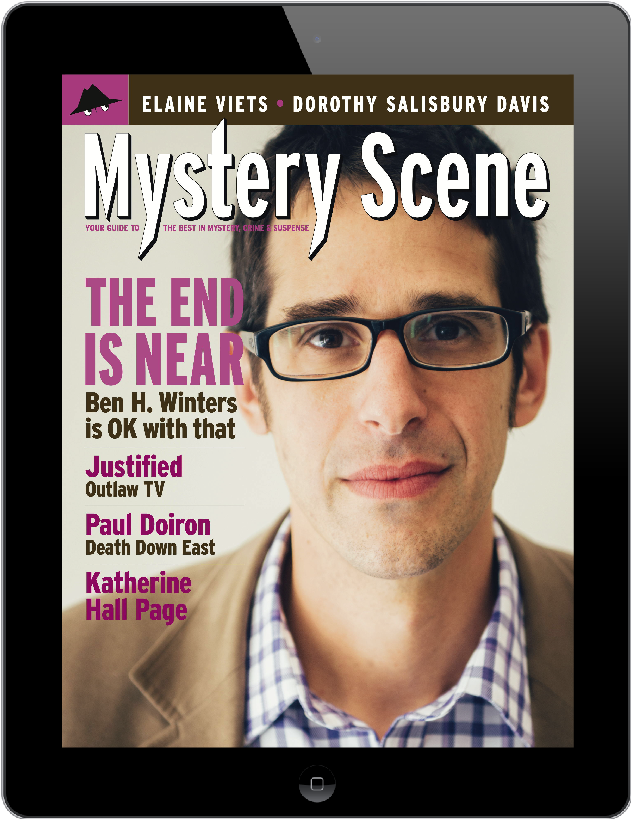

 Three years into her marriage, Davis published her first novel, The Judas Cat (1949), with Scribner, who remained her hardcover publisher for the rest of her career. Already many of the themes that would recur in Davis’ work—the seemingly close-knit small town populated with flawed but relatable people undone by a murder, and then the corrosive aftermath—appear in this debut, which is set up by a nifty locked-room mystery: How did 92-year-old Andy Mattson die violently in his house with only a cat as witness, and possibly as culprit?
Three years into her marriage, Davis published her first novel, The Judas Cat (1949), with Scribner, who remained her hardcover publisher for the rest of her career. Already many of the themes that would recur in Davis’ work—the seemingly close-knit small town populated with flawed but relatable people undone by a murder, and then the corrosive aftermath—appear in this debut, which is set up by a nifty locked-room mystery: How did 92-year-old Andy Mattson die violently in his house with only a cat as witness, and possibly as culprit?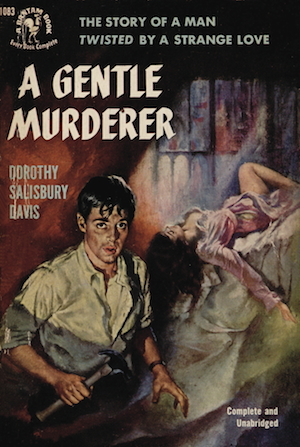 The Julie Hayes novels are difficult to pigeonhole, however. They feature one of the most dysfunctional marriages in mystery fiction, between Julie, chafing at her own lack of independence, and Jeff, the much older, condescending investigative reporter. Davis thoughtfully examines this relationship as it grows, changes, and eventually, ends. Julie is caustic, eccentric, and resourceful, but also deals with her own brutal rape in The Habit of Fear—more disturbing because Davis describes it without flourish or relish—in a “let’s get on with it” manner that does not diminish the horror. And yet, there is joie de vivre, especially with respect to the late 1970s/early 1980s New York City Davis depicts, a city in great transition that is clearly one the author loves.
The Julie Hayes novels are difficult to pigeonhole, however. They feature one of the most dysfunctional marriages in mystery fiction, between Julie, chafing at her own lack of independence, and Jeff, the much older, condescending investigative reporter. Davis thoughtfully examines this relationship as it grows, changes, and eventually, ends. Julie is caustic, eccentric, and resourceful, but also deals with her own brutal rape in The Habit of Fear—more disturbing because Davis describes it without flourish or relish—in a “let’s get on with it” manner that does not diminish the horror. And yet, there is joie de vivre, especially with respect to the late 1970s/early 1980s New York City Davis depicts, a city in great transition that is clearly one the author loves.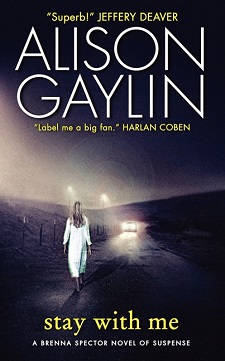
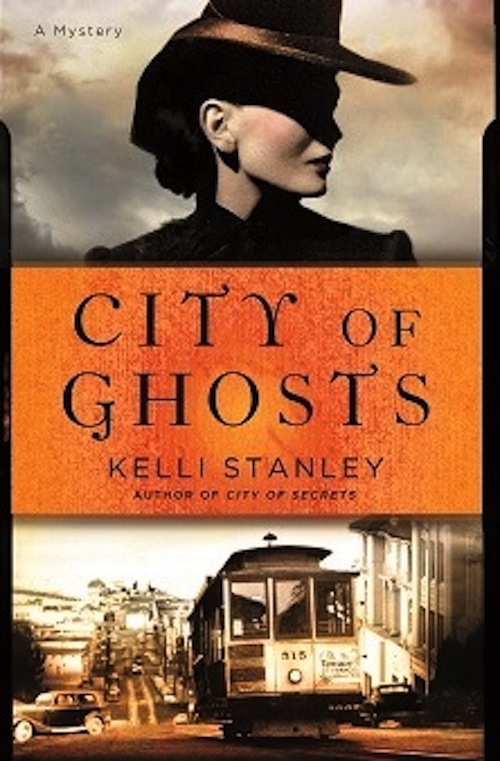
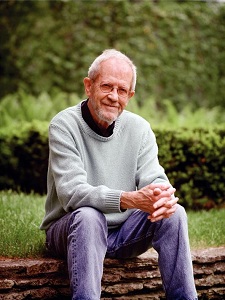



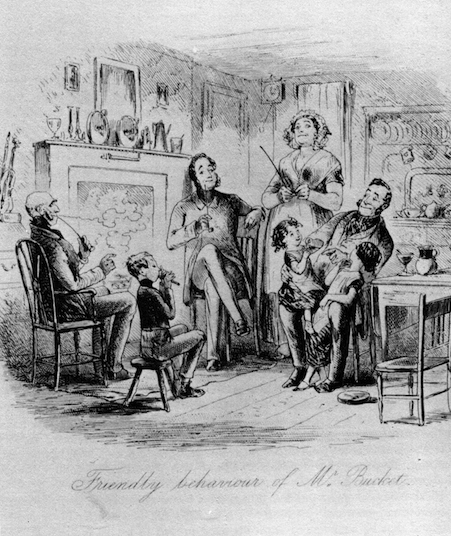 In praise of the delay.
In praise of the delay.






